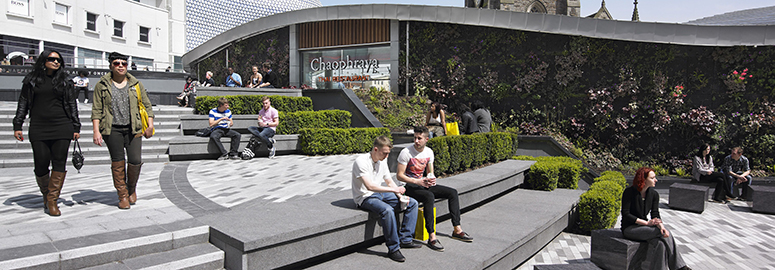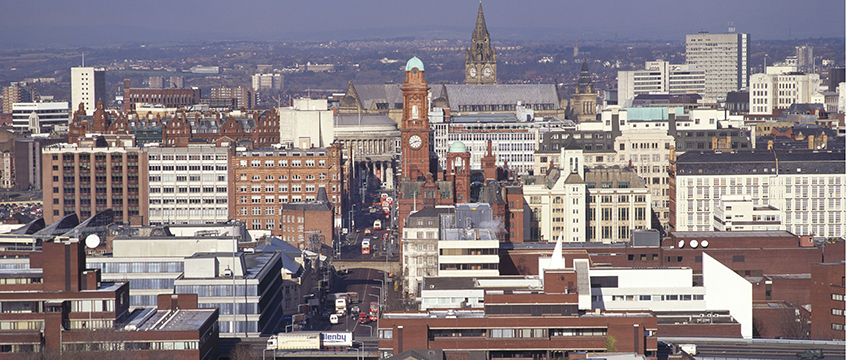Campaigns by prospective metro mayors were already under way in six city regions when the snap general election was called. So will the surprise announcement affect the outcome? Mark Smulian reports
Greater Manchester
As if we needed any reminders, prime minister Theresa May’s unexpected call for a snap General Election on 8 June shows just how unpredictable politics can be. The surprise poll could significantly affect the ongoing metro mayor campaigns, where six city regions are set to go to vote on 4 May.
At present, the Greater Manchester Combined Authority mayoralty looks safe for Labour’s Andy Burnham. A former cabinet minister, Burnham recently announced that he will not stand again in June as a local MP, but as metro mayor he could end up running all 10 councils involved – except Trafford – and the Labour party could hold 22 of 27 parliamentary seats.
The authority already has staff ready in place, led by chief executive Eamonn Boylan, whose background is housing.
Elections expert John Curtice, of Strathclyde University, rates Greater Manchester as “safe for Labour, but closer than they might like”.
Conservative Sean Anstee, Trafford’s leader, might beg to differ, but if Burnham does win, his first property-related battle will be over the Greater Manchester Spatial Framework.
This was prepared by the 10 boroughs – which have a long history of collaboration – and includes some green belt development.
Burnham’s manifesto states bluntly: “We will require a radical rewrite of the [framework].”
He condemned it as both “insufficiently ambitious” and likely to “not lead to the building of the right mix of housing types and tenures”, while also “concentrating too heavily on large, green sites close to main arterial roads,” and needing an overall rebalance from central Manchester towards the region’s outer towns.
A period of uncertainty is likely for property if Burnham wins, as this framework was created by the 10 borough leaders whose unanimous consent is needed for any alternative mayoral plan.
John Keyes, head of Cushman & Wakefield’s Manchester office, says: “The spatial plan is a little concerning as it may mean more delay and uncertainty and a focus on brownfield sites.
“He may need to help developers, as without more infrastructure and support the market will go to those places that are easier to work in.”
Rob Haslam, planning director at Savills’ Manchester office, thinks the council leaders and mayor will work well together as “Greater Manchester has a record of cross-party collaboration”.
But Haslam sees tensions over the framework. “It is based on work dating back to 2014, it has not just been dreamed up,” he says.
“You have to see what brownfield land is available, as if you don’t build on the green belt you lose valuable urban green space.”
DPP Planning associate director Richard Purser thinks the problems may be less than feared as “the housebuilders are fairly sanguine that somebody will say to Burnham, ‘if you are going to encourage economic growth then you need the houses, as not everyone can go into city centre high rises’.”
The industry is working on the assumption of a Burnham mayoralty, but disruption to the framework could see a period of frustrating inertia.
Key mayoral powers
Greater Manchester
• Local transport plan (with agreement of two-thirds of council leaders)
• Devolved transport budget and bus regulation
• Control of £300m housing investment fund
• Creation of spatial development strategy, with unanimous approval of councils
Candidates
Greater Manchester
• Sean Anstee (Con)
• Mohammad Aslam (Ind)
• Jane Brophy (Lib Dem)
• Andy Burnham (Lab)
• Marcus Farmer (Ind)
• Stephen Morris (Eng Dem)
• Shneur Odze (UKIP)
• Will Patterson (Green)
Combined Authority members
Greater Manchester
• Bolton
• Bury
• Manchester
• Oldham
• Rochdale
• Salford
• Stockport
• Tameside
• Trafford
• Wigan
 © View Pictures/REX/Shutterstock
© View Pictures/REX/Shutterstock
West Midlands
At first glance the West Midlands Combined Authority looks safe for Labour, but with the general election now a factor, a surprise outcome cannot be played down.
Scratch deeper and it is a close competition between Labour MEP Sion Simon, and Conservative Andy Street, the former John Lewis managing director.
Though the Tories hold just seven of 28 parliamentary seats and control only Solihull Council, all the councils except Sandwell have had Tory – or partly Tory – administrations within the past decade.
John Curtice of Strathclyde University says West Midlands is “a 50:50 split between Labour and the Conservatives”.
It could become very unpredictable, as mayoral elections allow first and second preference votes. If no-one secures 50% of the vote, all but the top two candidates are eliminated and second preferences added.
The West Midlands mayoralty could thus turn on the preferences of Liberal Democrat, Green and UKIP supporters.
It is not merely unclear who will become mayor. Interim combined authority chief executive Martin Reeves has said he does not want the permanent job and will return to running Coventry, with the WMCA chief executive role being advertised in the summer.
Simon proposes a second runway at Birmingham Airport. He also wants to double the region’s tram system, both to the airport and a new route for the southern Black Country.
Under him, a mayor’s office of housing and development would oversee a regional spatial plan, with a heavy emphasis on developing brownfield sites.
Street also supports metro expansion and the reopening of several heavy rail lines, but says the airport can expand without “an unnecessary second runway”.
He would also prioritise brownfield sites, and wants to build 165,000 homes by 2030 and encourage new, mixed-use developments.
Savills associate director Peter Gough thinks whoever wins will have a problem.
“I don’t believe the position carries enough weight or power to lead the seven boroughs or make the necessary difficult decisions that they will inevitably face,” he says, in particular in relation to green belt development.
Cushman and Wakefield partner David Smeeton urges the mayor to “just give the development piece some direction, in particular with transport, as getting around parts of the region can be difficult.”
He adds: “It’s clear the result could be a very close call, with Andy Street putting in a big effort but Sion Simon has the Labour machine behind him, so it could come down to second places.”
Turley senior director Mike Best has been sufficiently interested to attend some hustings and says: “It’s fairly open. Andy Street is a well-known character having run John Lewis and chaired the Greater Birmingham and Solihull LEP.
“Sion Simon was an MP and became an MEP and has been quite bold on transport.”
The contenders appeal to quite different groups, he says, “as Street’s power base is in Sutton Coldfield and Solihull, where green belt issues are most important, while Simon seems to be looking more to the traditional Labour vote, stressing regeneration in the Black Country”.
Best fears the West Midlands will not prove cohesive whoever wins as “there are always tensions between Birmingham and the Black Country, while Coventry always sees itself as separate”.
The mayor must get these disparate places working as one – and that is perhaps a tall order.
Key mayoral powers
West Midlands
• Devolved transport budget and bus regulation
• Key route network of local authority roads
• Planning powers for housing delivery.
• Control of skills and employment support services.
Candidates
West Midlands
• James Burn (Green)
• Pete Durnell (UKIP)
• Beverley Nielsen (Lib Dem)
• Sion Simon (Lab)
• Graham Stevenson (Comm)
• Andy Street (Con)
Combined authority members
West Midlands
Full members
• Birmingham
• Coventry
• Dudley
• Sandwell
• Solihull
• Walsall
• Wolverhampton
Associate members (not involved in mayoral election)
• Cannock Chase
• Herefordshire
• Nuneaton & Bedworth
• North Warwickshire
• Redditch
• Rugby
• Shropshire
• Stratford-on-Avon
• Tamworth
• Telford & Wrekin
• Warwickshire
See also: Metro mayors – bookies’ favourites and key policies
This story was originally published on 20th April 2017











